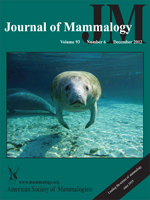The foraging behavior of the western pygmy-possum (Cercartetus concinnus) was investigated at Innes National Park (INP), South Australia, in the context of understanding survival strategies in a variable environment. Individual C. concinnus were radiotracked continuously for periods of up to 9 days over a 1-year period. Movements, timing of activity, and use of food trees were recorded, as well as information on availability of floral resources. Nectar feeding was the most common feeding behavior when the nectar of Eucalyptus spp. was available. Eucalyptus rugosa was the preferred food source; other myrtaceous species were used when flowers of E. rugosa were unavailable and possums switched to sap and lerp when nectar was scarce. Movement patterns of C. concinnus varied seasonally and among individual animals. C. concinnus was capable of traveling long distances of up to 4.7 km in a single night in search of resources. Areas of use tended to be larger when E. rugosa was flowering (up to 300 ha), but possums also undertook long-distance travel to reach resources when nectar was rare. These long-distance movements suggest that the home ranges of C. concinnus can be several hundred hectares in size. C. concinnus at INP rely on long-distance movements, diet-switching, floristically and structurally diverse habitats, and torpor to cope with temporal and spatial fluctuations in resource availability.
BioOne.org will be down briefly for maintenance on 17 December 2024 between 18:00-22:00 Pacific Time US. We apologize for any inconvenience.
How to translate text using browser tools
1 December 2012
Strategies of a small nectarivorous marsupial, the western pygmy-possum, in response to seasonal variation in food availability
Damian S. Morrant,
Sophie Petit
ACCESS THE FULL ARTICLE

Journal of Mammalogy
Vol. 93 • No. 6
December 2012
Vol. 93 • No. 6
December 2012
burramyid
Cercartetus concinnus
diet
food preference
habitat use
movement patterns
nectar




